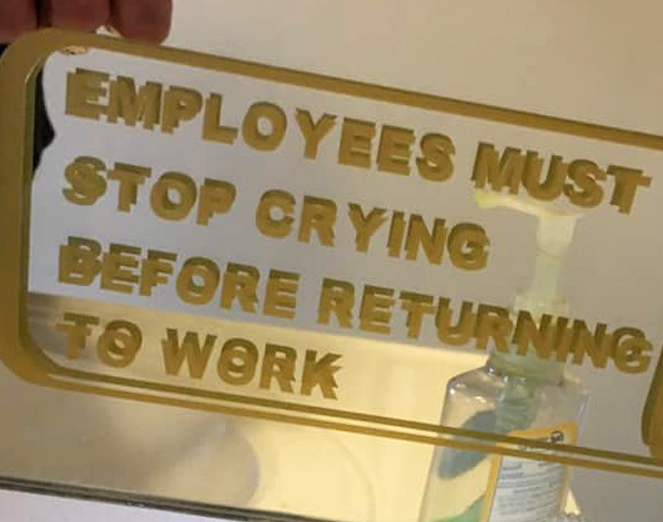

“Seeing like a state”. It could be half the length without losing anything, but it’s a very interesting perspective on states and central planning that I haven’t thought about before and am enjoying.


“Seeing like a state”. It could be half the length without losing anything, but it’s a very interesting perspective on states and central planning that I haven’t thought about before and am enjoying.
that could be, or maybe I got lucky. In any case, I’m not complaining. i remember it was like 750 bucks for both machines, and with other brands it would have been 800-1200 for a single machine
Our super cheap Candy (Washer and a drier) has been going for 5 years now without issue 🤷 Though i’d buy a different brand if i had to again and wasn’t pressed for money, I am definitely surprised how well it’s doing.
The solution proposed in “After Capitalism” is (with democratically worker managed companies):
A flat-rate tax on the capital assets of all productive enterprises is collected by the central government, all of which is plowed back into the economy, assisting those firms needing funds for purposes of productive investment. These funds are dispersed throughout society, first to regions and communities on a per capita basis, then to public banks in accordance with past performance, then to those firms with profitable project proposals. Profitable projects that promise increased employment and/or further other democratically decided goals are favored over those that do not. At each level—national, regional, and local—legislatures decide what portion of the investment fund coming to them is to be set aside for public capital expenditures, then send down the remainder, no strings attached, to the next lower level. Associated with most banks are entrepreneurial divisions, which promote firm expansion and new firm creation. Large enterprises that operate regionally or nationally might need access to additional capital, in which case it would be appropriate for the network of local investment banks to be supplemented by regional and national investment banks.
That’s for taking care of the investment part that stocks/shares fulfill for a large part right now.
And for getting there:
Legislation giving workers the right to buy their company if they so choose. If workers so desire, a referendum is held to determine if the majority of workers want to democratize the company. If the referendum succeeds, a labor trust is formed, its directors selected democratically by the work-force, which, using funds derived from payroll deductions, purchase shares of the company on the stock market. In due time, the labor trust will come to own the majority of shares, at which time it takes full control via a leveraged buyout, that is, by borrowing the money to buy up the remaining shares.
Along with legislation that if a company is bailed out by the government, it gets nationalized and turned into a worker self managed company. If companies get sold, they can only be sold to the state (according to the value of current assets, not stock market cap or similar). And if a firm is not sold, it’s turned over to the workers if the founders death. If there’s multiple founders, each can sell their share to the state or workers separately.
For stocks specifically, there’s the Meidner plan, where every company with more than 50 employees is required to issue new shares each year equivalent to 20% of its profits, these shares will be held in a trust owned by the government, and in an estimated 35 years, most firms would become nationalized (of course along side all newly founded firms having to be worker owned).
Not saying I fully agree with all of Schweickharts proposals, but at least the book is a relatively concrete proposal for an alternative that can be discussed, and how to possibly get there, so I thought it merits sharing.


One thing I always wonder is if it actually could end poverty 22 times over.
i mean, rich people hoarding money is increasing moneys scarcity for everyone else, theoretically increasing its value. And if it were suddenly distibuted fairly, it’d lose value and there would be a higher cut off for what’s considered poverty. on the other hand, a lot of their money is funny money, like being tied up in stocks and not actually worth as much in currency compared to what is said (if they sold the stock, the value would drop and they’d get less).
so i’m actually curious if anyone ever did an analysis of what would happen if e.g. the wealth of the top 0.1% is evenly spread across the population.
of course that’s super complex and hard to say what the social effects would be. But the simplistic ‘everyone would get x dollars, poverty limit is y, x > y, so no more poverty’, while useful to show the scale, always sounded too naive to me.
Plus kids will find a way. Our english teacher didn’t want us to say ‘shit’, but to use ‘sugar’ instead.
There was a lot of ‘bullsugar’ and similar in that class.


In general, anything that hijacks search shortcuts.
Oh you wanted to search for text on this one page? Let me show you a search bar for the whole website instead, with a search that’s strictly worse than the search engine that you came from in the first place.


Maybe a third of a used or import lathe or mill.
Machining is super expensive as a hobby to get started.
Which is why I’m slowly upgrading my cheap CNC router to be more rigid and capable, bit by bit. Machined stainles for the first time last week. though i’ll never get close to a ‘real’ machine, in hobby machining, everything is a finishing pass…
Assuming google doesn’t start blocking it to please the dictator, of course.